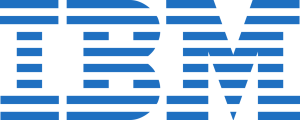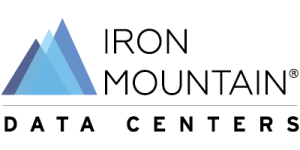Wholesale Colocation in Tier 2 Markets: The Unexpected Winners
Rethinking the Colo LandscapeFor decades, Tier 1 data center markets like Northern Virginia, Silicon Valley, and London have commanded the spotlight in wholesale colocation. Their attraction was rooted in dense network ecosystems, plentiful cloud onramps, and massive enterprise workloads. Companies invested heavily in these metros, reinforcing their dominance.But in 2025, the wholesale colocation landscape is shifting. Tier 2 markets—secondary metro areas with growing digital economies—are experiencing a surge in demand. What was once an afterthought for hyperscalers and enterprises is now a strategic growth frontier.So, what’s driving this evolution? It's a mix of economic shifts, energy dynamics, regional business growth, and the need for diversified infrastructure footprints. As hyperscalers expand, and enterprise IT leaders rethink their strategies, Tier 2 cities are emerging as some of the most promising locations in the global data center map.Defining Tier 2 in the Context of ColocationIn the data center industry, “Tier 2” doesn’t mean rural, remote, or technologically behind. Instead, these are vibrant metro areas that:Have robust but still-maturing tech ecosystems.Offer expanding power and fiber networks.Present more affordable and accessible real estate.Deliver competitive latency to nearby Tier 1 markets.Unlike Tier 3 markets, which might still lack critical mass, Tier 2 cities are seeing sustained interest from hyperscale and cloud-native companies.Examples of Leading Tier 2 Markets:Columbus, Ohio:Benefiting from Midwest enterprise growth and hyperscaler expansion.Minneapolis, Minnesota:A financial and healthcare tech hub.Denver, Colorado:Known for its strong fiber connectivity and central U.S. position.Salt Lake City, Utah:A fast-growing market for AI and west-coast overflow.Charlotte, North Carolina:Driven by fintech and healthcare sectors.Amsterdam (peripheral zones):Beyond the core AMS-IX network zone.Osaka, Japan:Complementary to Tokyo’s dense network.These markets are seeing hundreds of megawatts of new demand—once reserved for Tier 1 hubs—being deployed locally.Why Tier 2 Markets Are Winning Now1. Power Accessibility and PricingPower is the new battleground in data center site selection. In Tier 1 markets, energy shortages, long grid waitlists, and environmental regulations are creating delays and cost inflation.Challenges in Tier 1 Markets:Ashburn, Northern Virginia: Long interconnect waitlists and scarce power.Dublin, Ireland: Grid prioritization limits new data center builds.Singapore and Frankfurt: ESG constraints tighten new capacity deployments.Advantages in Tier 2 Markets:Lower per-kWh costs, sometimes 30–50% less than Tier 1 cities.Easier access to renewable energy sources like solar and wind.Shorter timelines for substation deployment and interconnection.Power isn’t just a utility; it's a competitive edge. Tier 2 markets are leveraging this to their advantage.2. Land and BuildabilityColocation providers increasingly prefer campus-style builds: large plots of land with space for substations, multiple data halls, and future phases. Tier 1 markets, constrained by urban sprawl, zoning challenges, and community pushback, struggle to offer this.Tier 2 markets, by contrast, deliver:Lower land acquisition costs.More permissive zoning laws.Faster environmental permitting.Easier utility upgrades.This enables faster ground-up builds, often shaving months off delivery timelines.3. Regional Customer DemandThe evolution of digital services, edge computing, and remote work has increased the need for regional data center hubs.Enterprises now expect:Localized storage for compliance and speed.Low-latency compute to support edge applications.Regional data aggregation points.Tier 2 markets solve this by providing localized infrastructure close to end users, making them ideal for backup, disaster recovery, and AI model training.4. Labor and Talent EconomicsA decade ago, skilled data center engineers were concentrated in Tier 1 hubs. That’s changed. Today:Tech talent is widely distributed, thanks to hybrid work.Local universities in Tier 2 metros offer strong STEM programs.Operating costs are lower, thanks to competitive wages and affordable living.These factors make Tier 2 markets attractive not only for construction but for long-term operations and managed services.Notable Tier 2 Markets and Their Growth StoriesColumbus, OhioAmazon Web Services is developing major campuses in the area.Intel's massive semiconductor plant project is driving supporting infrastructure.200+ MW of colocation and hyperscale projects are underway.Salt Lake City, UtahAn attractive West Coast alternative, avoiding California's higher taxes and power constraints.Google, Facebook, and others have invested in hyperscale campuses.A hotbed for disaster recovery and AI training clusters.Denver, ColoradoStrong east-west fiber paths make it a key interconnect point.A growing mix of wholesale and edge deployments.A central location for serving multiple U.S. regions with balanced latency.Charlotte, North CarolinaFintech, banking, and healthcare sectors drive enterprise demand.Access to clean power and tax incentives promote digital infrastructure growth.Operators are capitalizing on business-friendly policies.Hyperscaler Behavior in Tier 2 MarketsTech giants are no longer concentrating their deployments in Tier 1 locations alone.Google: New campuses in Omaha, Nebraska, and Council Bluffs, Iowa.Microsoft: Expanding in San Antonio, Texas, and Goodyear, Arizona.Meta: Investing in DeKalb, Illinois, and Kuna, Idaho.These facilities aren’t overflow or secondary—they’re mission-critical, often supporting AI workloads, metadata warehousing, and regional cloud zones.Colocation Providers Capitalizing on the ShiftQTSActive in North Carolina, Illinois, and Oregon.Delivering scalable power blocks designed for hyperscale tenants.STACK InfrastructureDeveloping large campuses in the Portland suburbs, Atlanta exurbs, and Phoenix-area secondary markets.Known for master-planned campuses ready for hyperscale growth.Vantage Data CentersBuilding in Arizona and Northern Nevada.Selling the advantage of ample power and rapid scalability.Datacenters.com MarketplaceFeaturing hundreds of listings in Tier 2 markets.Supporting custom build-to-suit, powered shell, and full colocation deployments.Risks and Challenges in Tier 2 MarketsFiber Density and Network DiversityChallenges:Lack of dense carrier hotels.Fewer direct cloud exchange points.Limited east-west redundancy compared to Tier 1 markets.Solutions:Direct cloud onramps from AWS, Azure, and Google Cloud.Expanded SDN partnerships.Carrier-neutral interconnection ecosystems.Environmental and Climate FactorsCertain Tier 2 locations face climate-related challenges:Higher elevations (e.g., Denver) lead to increased cooling demands.Water scarcity in some Southwest markets limits traditional cooling.Operators must invest in liquid cooling, adiabatic systems, or dry coolers.Environmental factors are now part of site selection modeling, alongside power and land considerations.What This Means for Buyers and BrokersFor enterprises and cloud-native companies:Tier 2 markets offer lower total cost of ownership (TCO).Buyers gain greater design flexibility and energy choices.SLA profiles can be similar to Tier 1 markets without congestion or premium pricing.For brokers and infrastructure consultants:Less competition in deal sourcing means higher close rates.Shorter construction timelines enable faster go-live.Opportunities to educate clients on emerging markets.Future Outlook: Are Tier 2 Markets the New Normal?Wholesale colocation is undergoing a geographic rebalancing:Tier 2 markets aren’t temporary gaps—they are the next wave of core infrastructure hubs.Hyperscalers will continue to lead builds, but enterprises will follow as they seek localized compute and storage.In the next five years, expect to see:More billion-dollar data center campuses outside legacy hubs.Regional specialization (e.g., AI hubs in Salt Lake, fintech hubs in Charlotte).Improved fiber networks connecting Tier 2 cities to global cloud regions.The Center Is No Longer the Only CenterThe notion that colocation must happen in Ashburn, Silicon Valley, or London is increasingly outdated. Tier 2 markets are showing they can deliver scale, performance, and economic efficiency—often faster and at a lower cost than the legacy hubs.As the industry moves toward distributed compute, energy optimization, and geographic redundancy, the next great colocation campuses won’t always be where people expect.For those watching the market closely, Tier 2 cities represent the future of data infrastructure. The winners of the next colocation boom may already be breaking ground—in places most of the industry hasn’t paid attention to yet.
























